Aug. 17 marks 20 years since the passing of Robert R. Gilruth, a major driving force behind NASA’s successes in its early years including the first landing on the Moon in 1969. As the first director of the Manned Spacecraft Center (MSC), now the Johnson Space Center in Houston, he not only oversaw the design and construction of NASA’s center for the training of astronauts and the control of human spaceflights but also instrumental in the development of the first three American human spaceflight programs that led to the achievement of President John F. Kennedy’s goal of landing a man on the Moon and returning him safely to the Earth before the end of the 1960s.
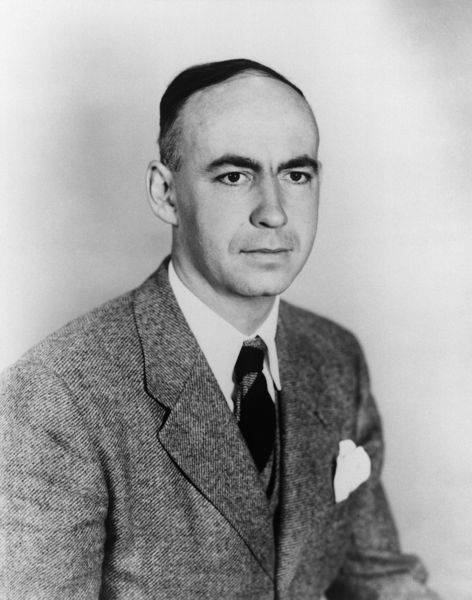
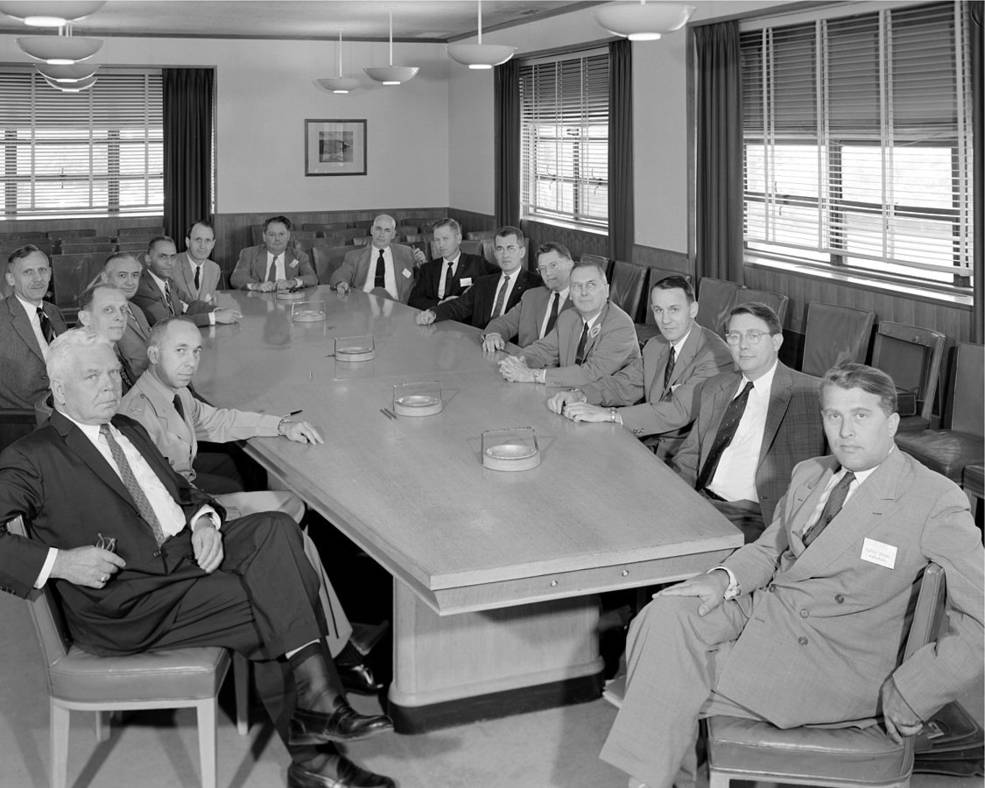
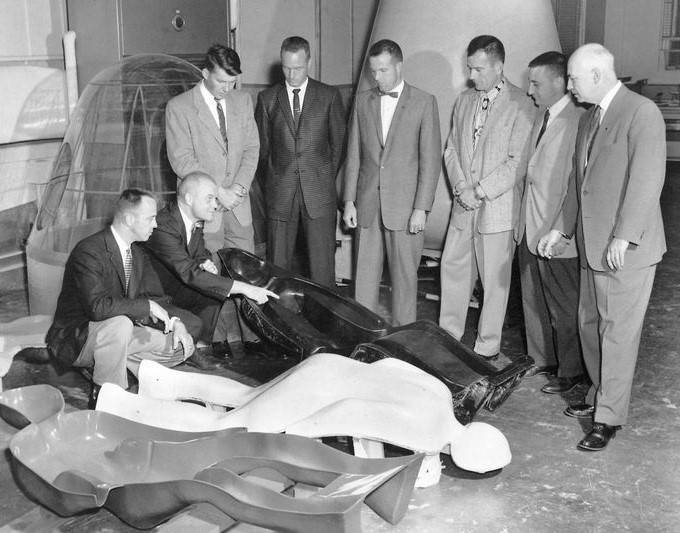
Left: Gilruth as a NACA employee in 1946. Middle: Gilruth (eighth from right) during a NACA’s Special
Committee on Space Technology meeting of at Langley in May 1958. Right: Gilruth, right, showing the
seven Mercury astronauts their form-fitting couches at Langley in 1959.
Gilruth was born in Nashwauk, Minnesota, on Oct. 8, 1913. He earned a Bachelor of Science degree in 1935 and a Master of Science degree in 1936, both in aeronautical engineering and both from the University of Minnesota. Gilruth began his lengthy public service career in January 1937 at the National Advisory Committee for Aeronautics’ (NACA) Langley Memorial Aeronautical Laboratory in Hampton, Virginia. In 1941 he defined and published the first set of requirements for the handling characteristics of aircraft. Four years later he established an organization and facility for testing rocket-powered aircraft that became the Pilotless Aircraft Research Division and then NASA’s Wallops Station launching site, now the Wallops Flight Facility in Wallops Island, Virginia. In 1952, Gilruth was named the assistant director of the Langley laboratory.
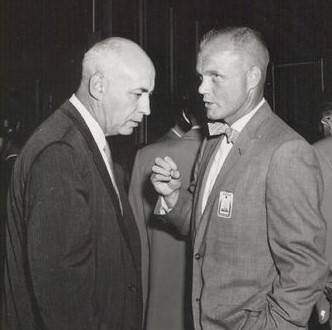
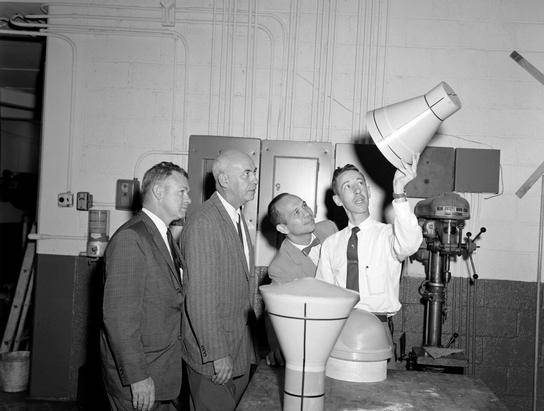
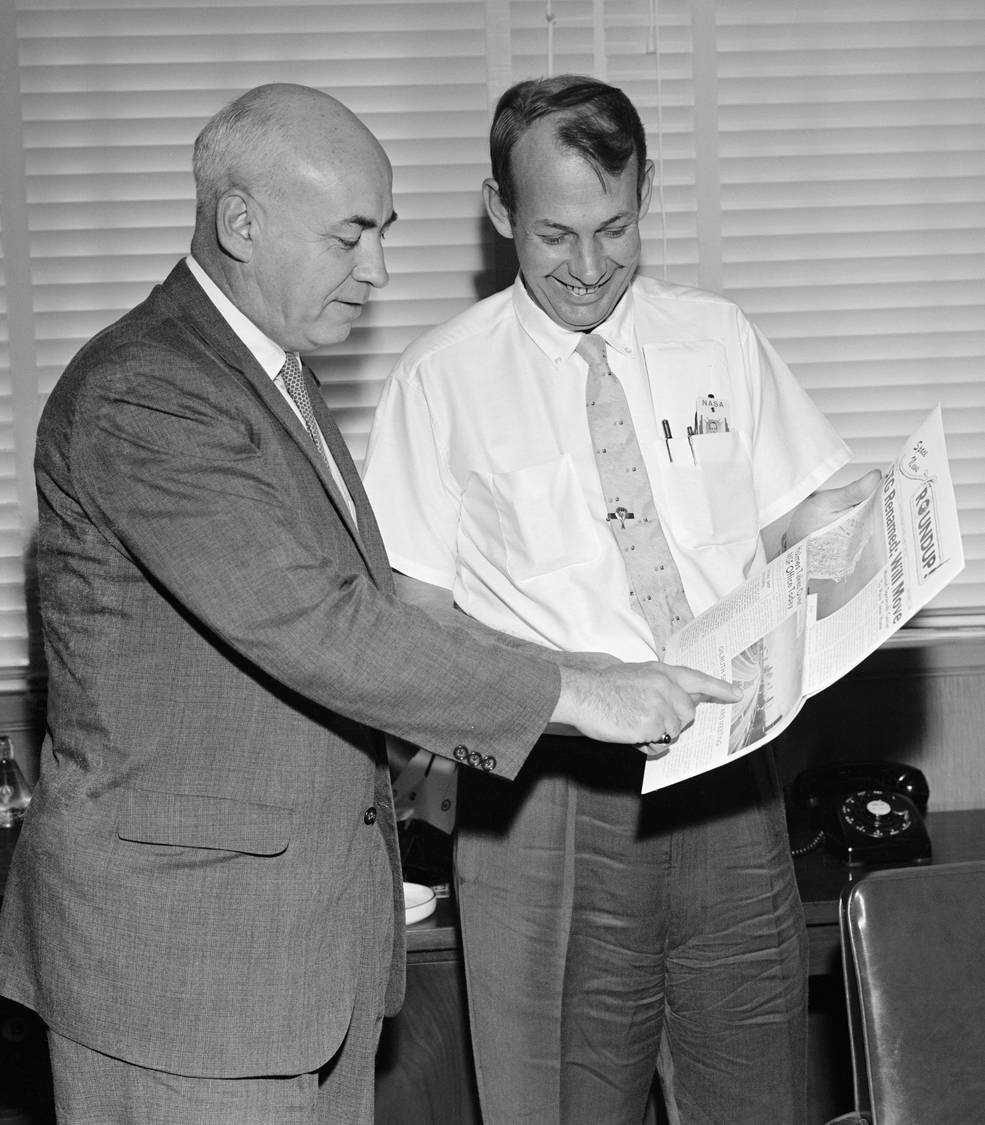
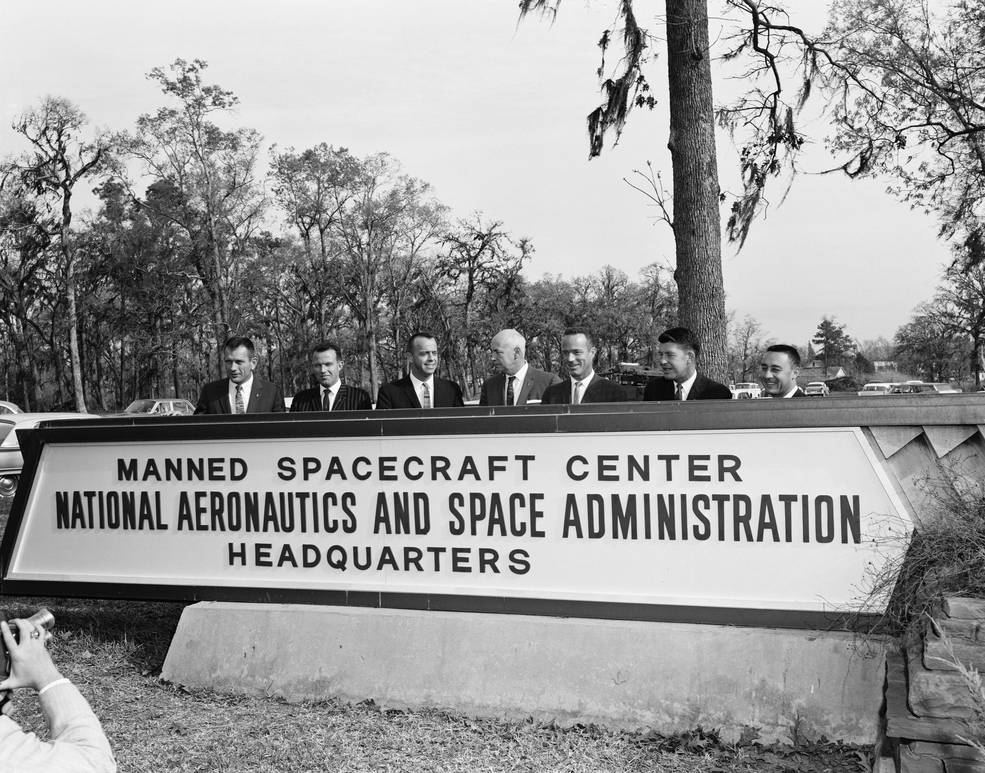
Left: Gilruth, left, and Mercury astronaut John H. Glenn in conversation at Langley in 1959. Middle left: A Space Task Group (STG) engineer, right, showing a model of a capsule to Charles J. Donlan, left, Gilruth, and Maxime A. Faget in 1959. Middle right: Paul E. Purser, right, showing Gilruth the first edition of the Space News Roundup on Nov. 1, 1961, announcing the STG’s renaming to MSC and relocation to Houston. Right: Gilruth, middle, in March 1962 and six of the seven Mercury astronauts with the sign outside the interim MSC headquarters building in Houston.
On Oct. 1, 1958, the National Aeronautics and Space Administration, or NASA, opened for business, absorbing several existing NACA facilities including Langley, that was renamed to Langley Research Center. Just five weeks later, NASA created the Space Task Group (STG) charged with putting an American in space before the Soviet Union and placed Gilruth in charge. The work of the STG led to the creation of Project Mercury that put America’s astronauts into space, first on suborbital flights and eventually into orbit. Following President Kennedy’s announcement of the Moon landing goal and with the additional work needed, the STG outgrew its facilities at Langley. Following an extensive site evaluation and selection process, NASA announced on Sep. 19, 1961, that the STG would be relocated to Houston, Texas, and on Nov. 1 renamed it the Manned Spacecraft Center, or MSC, with Gilruth as its director.
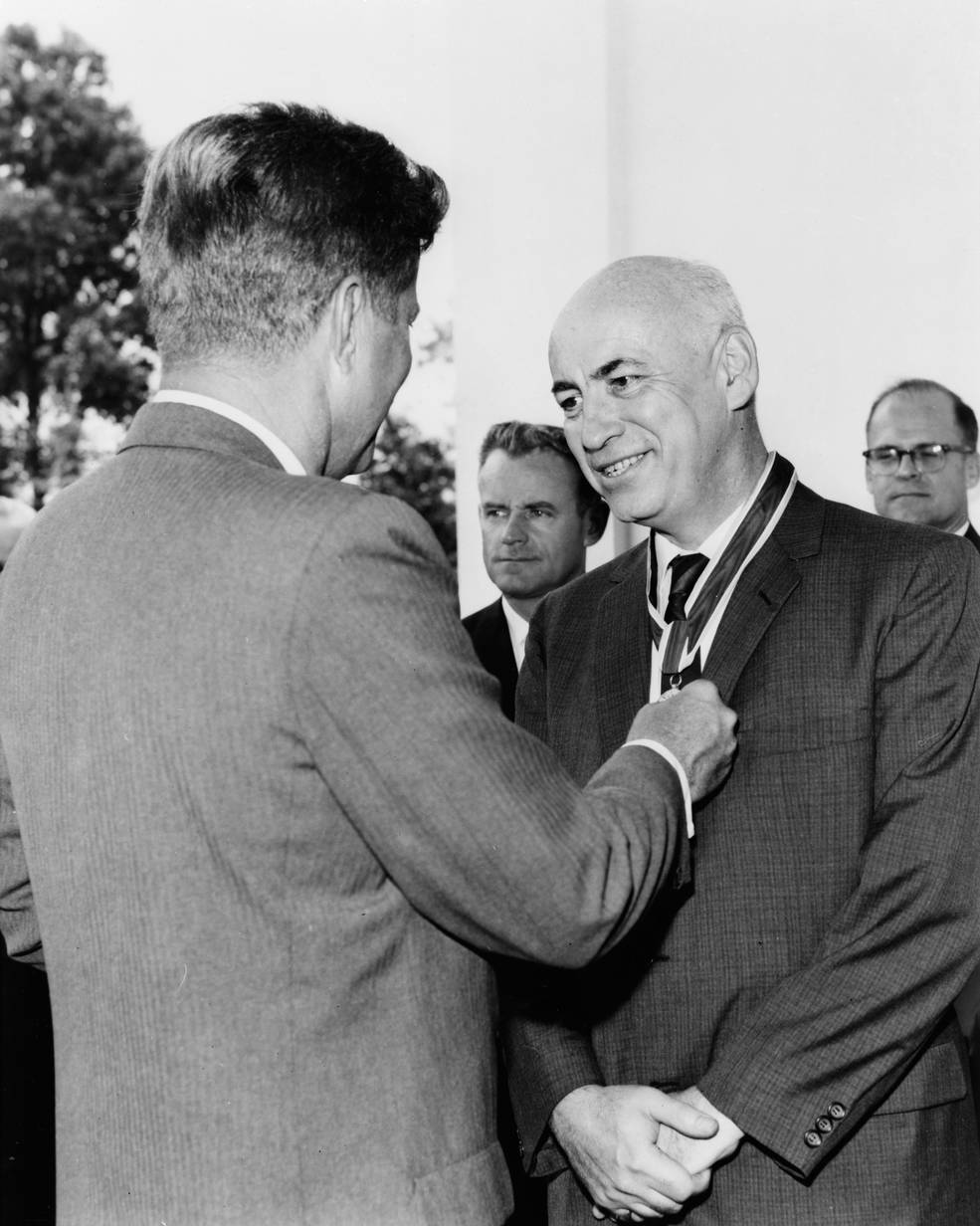
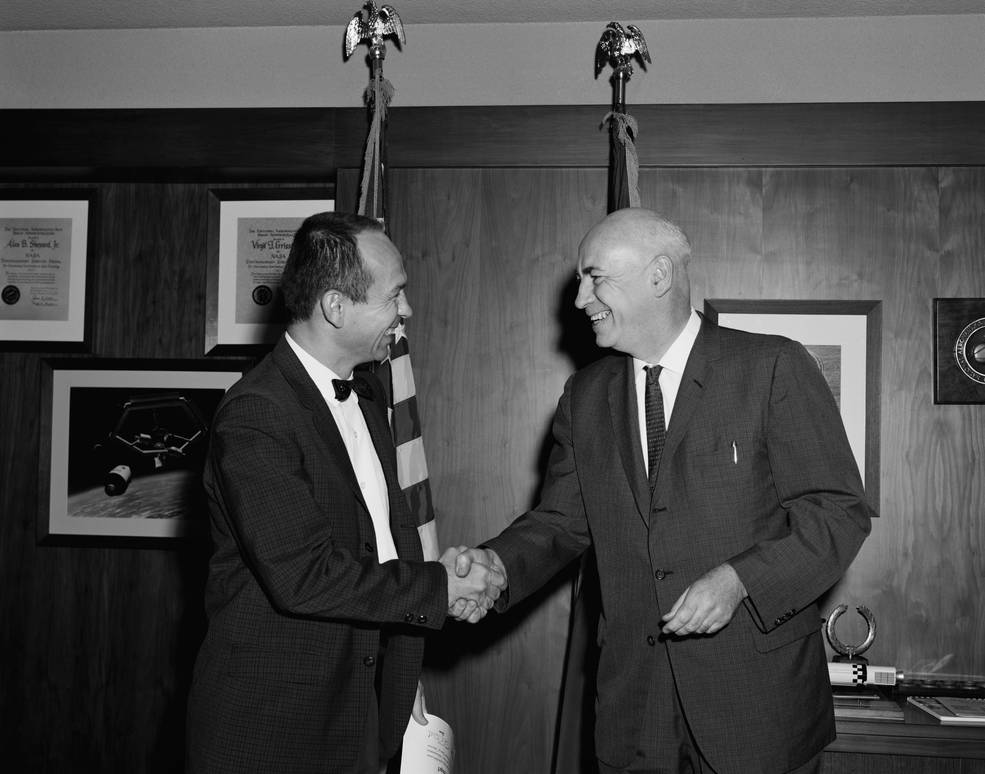
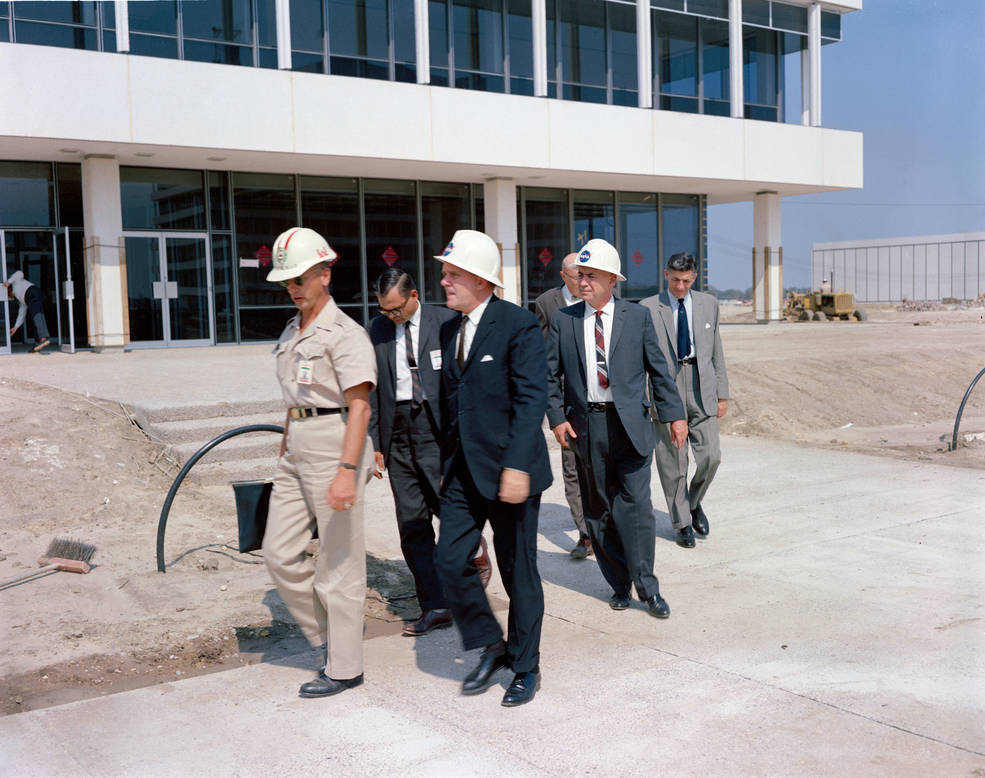
Left: President Kennedy, left, presenting Gilruth with the President’s Award for Distinguished Federal Civilian Service at the White House in August 1962. Middle: Gilruth, right, in his office at MSC’s interim headquarters in the Farnsworth-Chambers building in Houston in October 1963, presenting a 20-year service award to Maxine A. Faget. Right: Gilruth, second from right, touring MSC’s new site under construction in September 1963.
While the new facility in Clear Lake was under construction, MSC employees relocated from Virginia and worked out of several leased facilities in southeast Houston. In 1962, Gilruth set up his office in the interim MSC headquarters located in the Farnsworth-Chambers Building on South Wayside Drive, today the home of the Houston Parks and Recreation Department. During this time, six crewed Mercury flights were completed and planning had begun on the two-person Gemini missions to test the critical techniques required to accomplish a Moon landing mission and the three-person Apollo spacecraft that would take astronauts to the Moon.
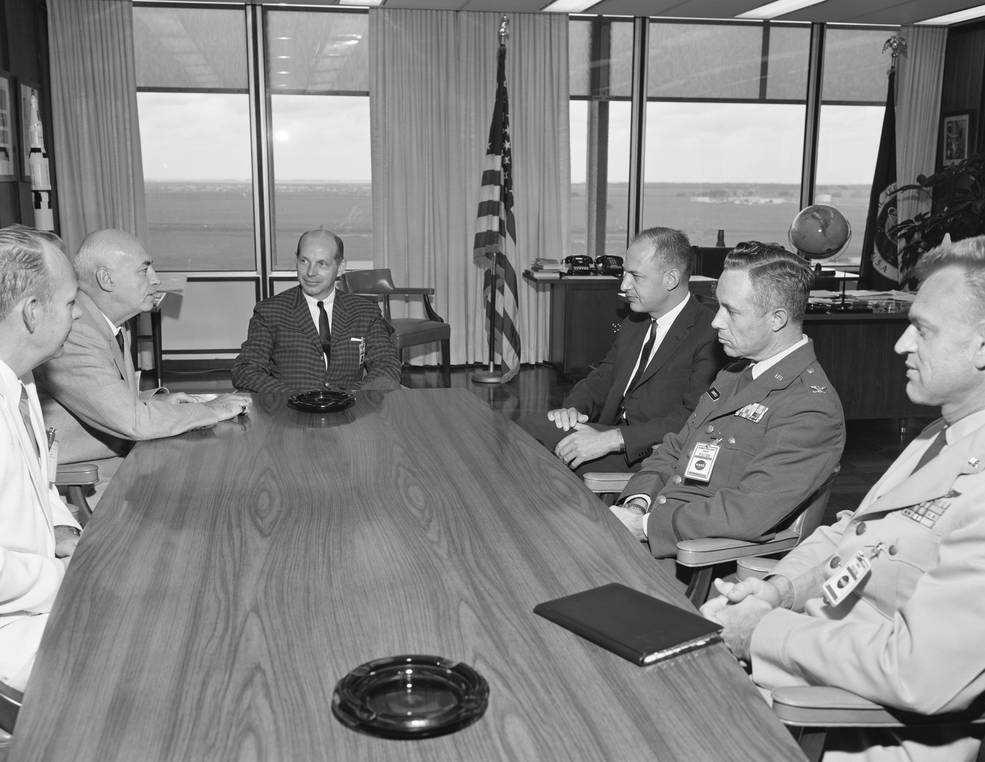
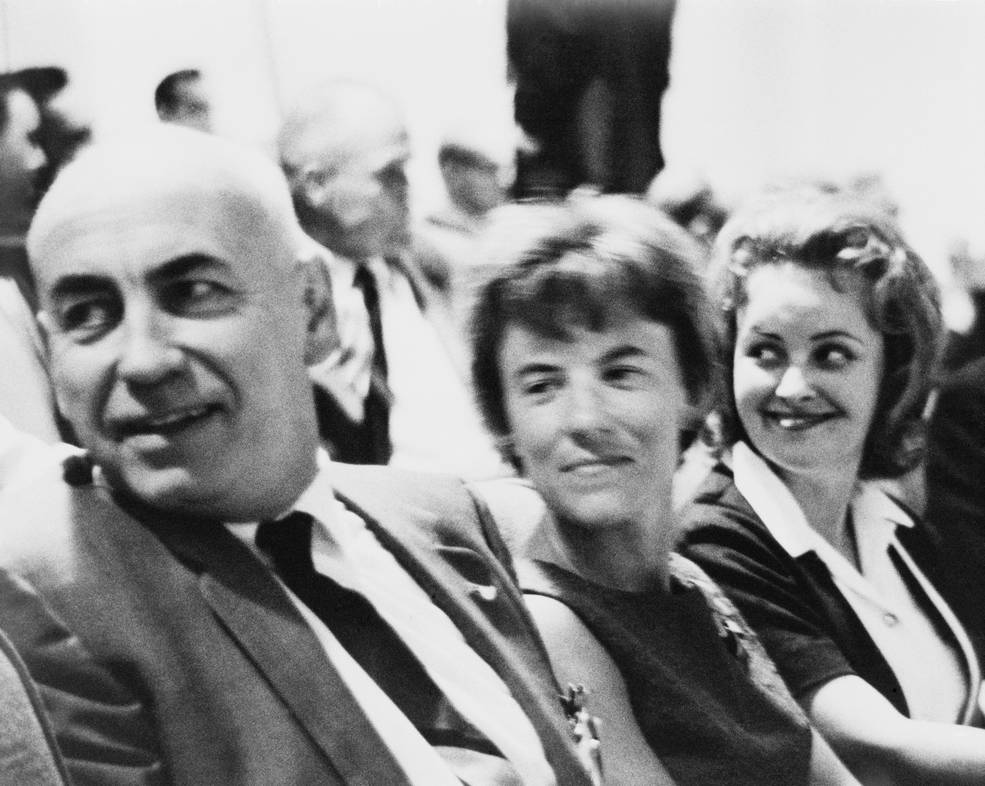
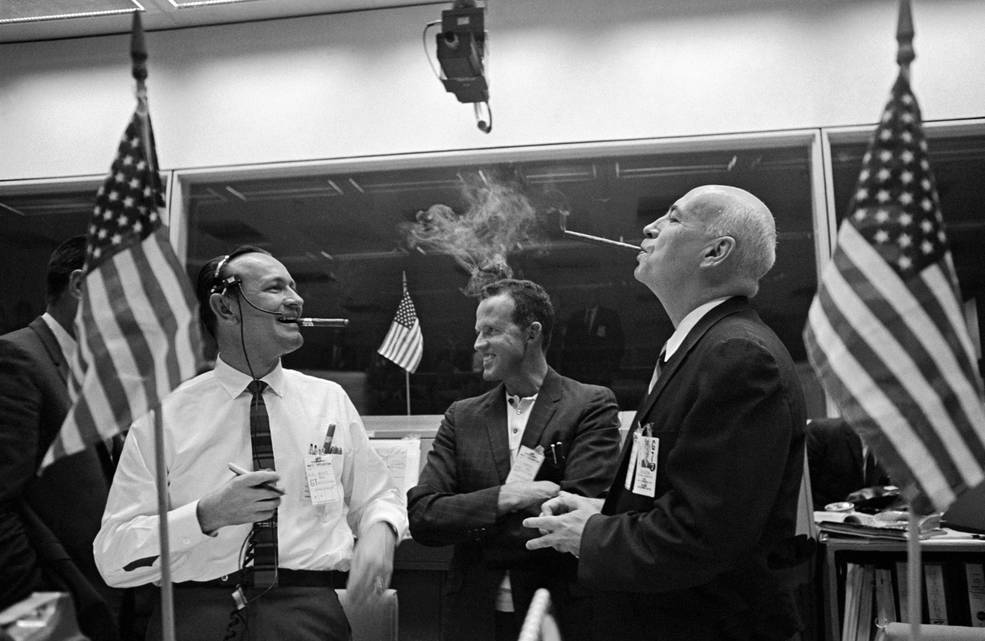
Left: Gilruth, second from left, hosting a delegation of U.S. Air Force officials in his new office on the ninth floor of MSC’s administration building in August 1964. Middle: Gilruth, left, in the Mission Control viewing gallery in June 1965 with Patricia McDivitt and Patricia White, right, the wives of the Gemini 4 crew then in orbit during the first mission controlled from the new center. Right: Gilruth, right, with Christopher C. Kraft, left, and astronaut L. Gordon Cooper in Mission Control in December 1965
celebrating the successful rendezvous between Gemini 7 and 6.
With construction still underway, the new MSC site officially opened for business on Feb. 20, 1964, and Gilruth moved into his new office on the ninth floor of the main administration building, at the time called Building 2. The new Mission Control was ready to follow the first crewed Gemini mission in March 1965 and with the flight of Gemini 4 in June it took over as the nerve center of American human spaceflights, a role it has served ever since. Gilruth played a critical role in leading the center to ensure the safe completion of the remainder of Project Gemini and his leadership guided the painful recovery of the Apollo Program following the loss of astronauts Virgil I. Grissom, Edward H. White, and Roger B. Chaffee in the Apollo 1 fire.
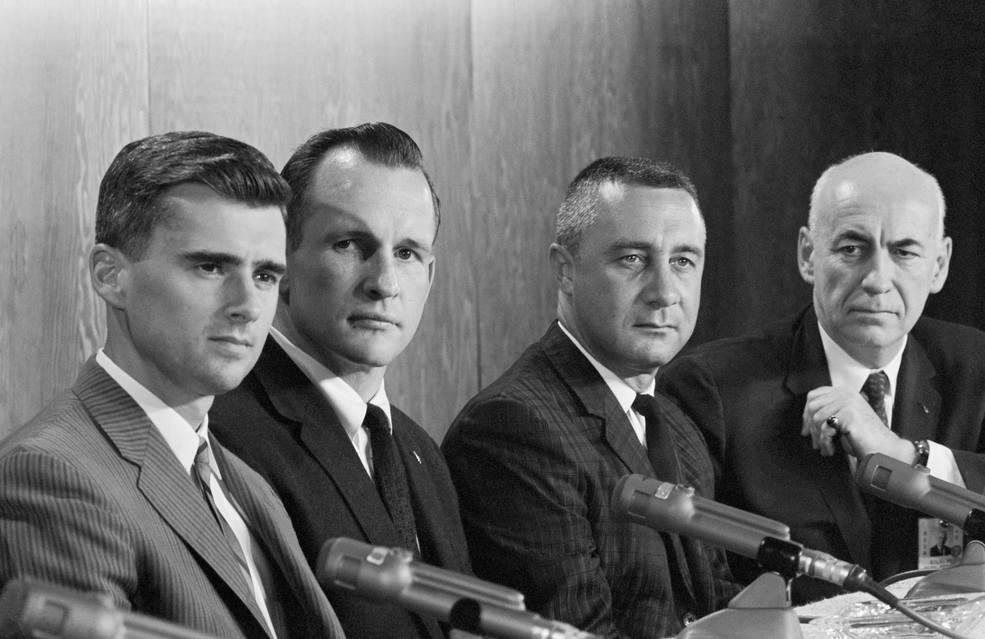
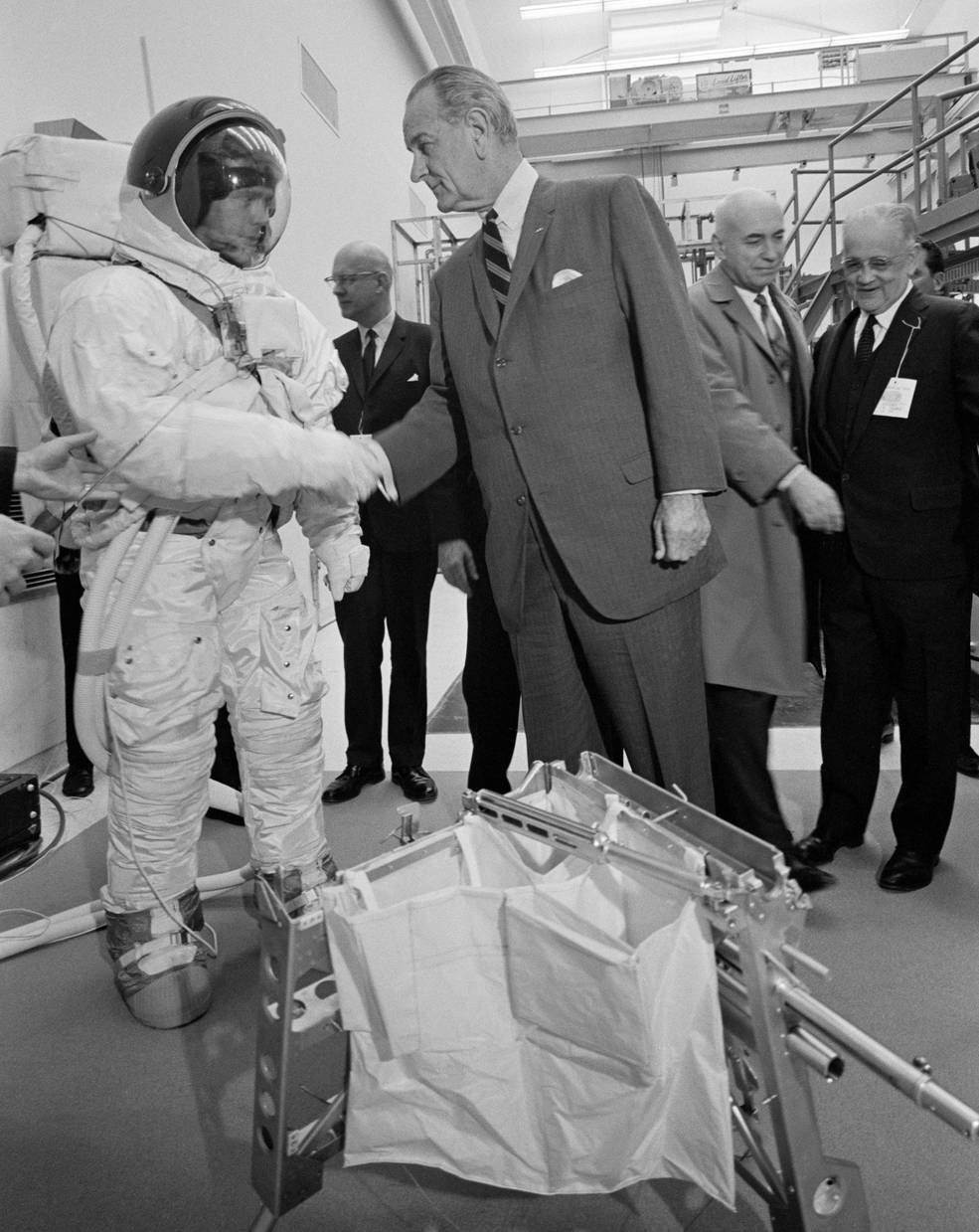
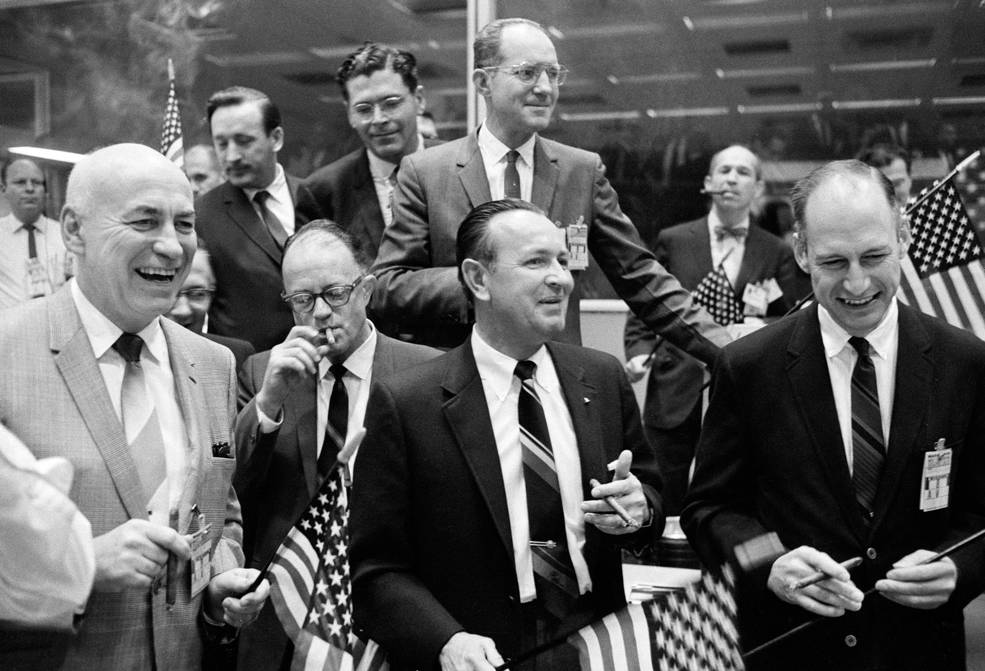
Left: Gilruth, right, introducing the Apollo 1 crew of Chaffee, left, White, and Grissom to the press in March 1966.
Middle: Gilruth, second from right, during President Johnson’s visit to MSC in March 1968. Right: Gilruth, left, in Mission Control with other NASA senior managers following the successful splashdown of Apollo 8 in December 1968.
Part of that recovery included the bold decision in August 1968, before a crewed Apollo mission had been flown, to send Apollo 8 on a circumlunar flight in December of that year, a decision that Gilruth supported and advocated to NASA Headquarters. The success of Apollo 8 once and for all put the United States ahead of the Soviet Union in the race to the Moon and significantly increased the chances of achieving President Kennedy’s goal.
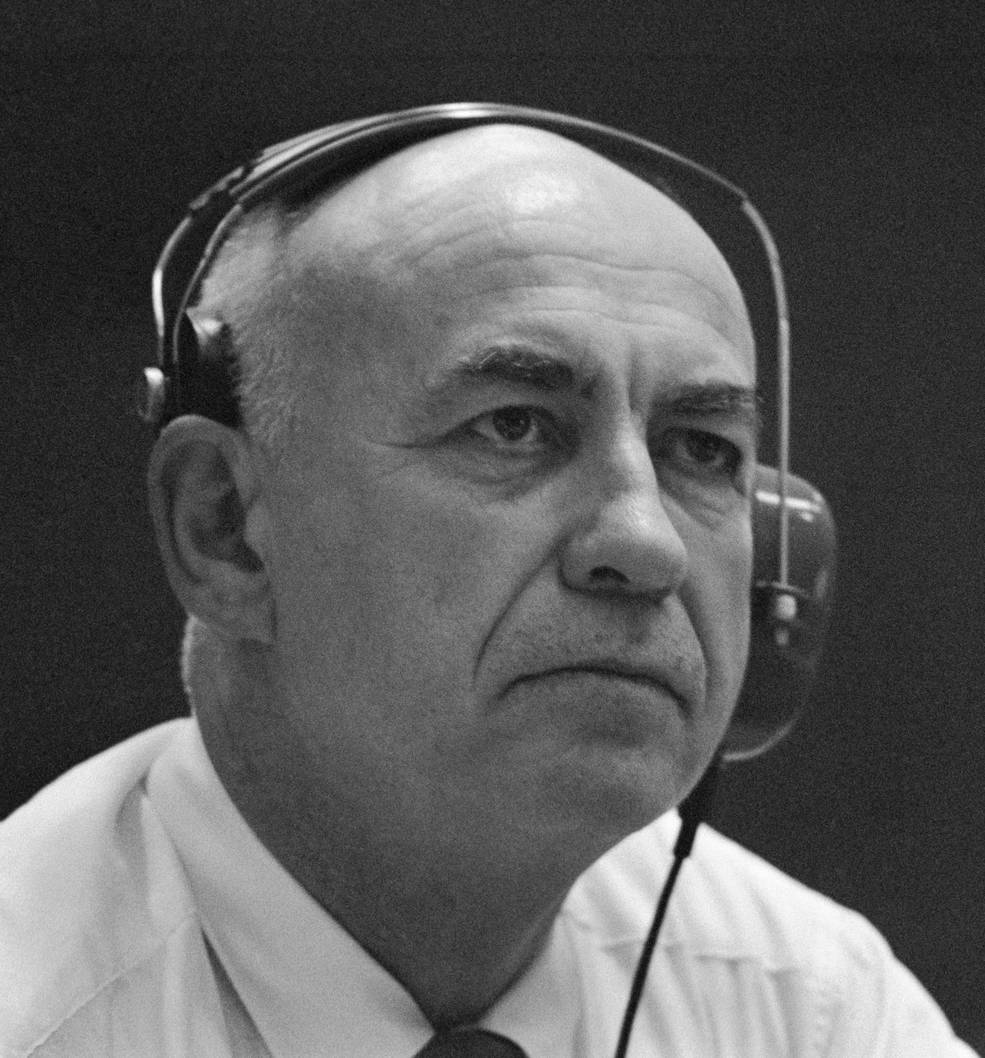
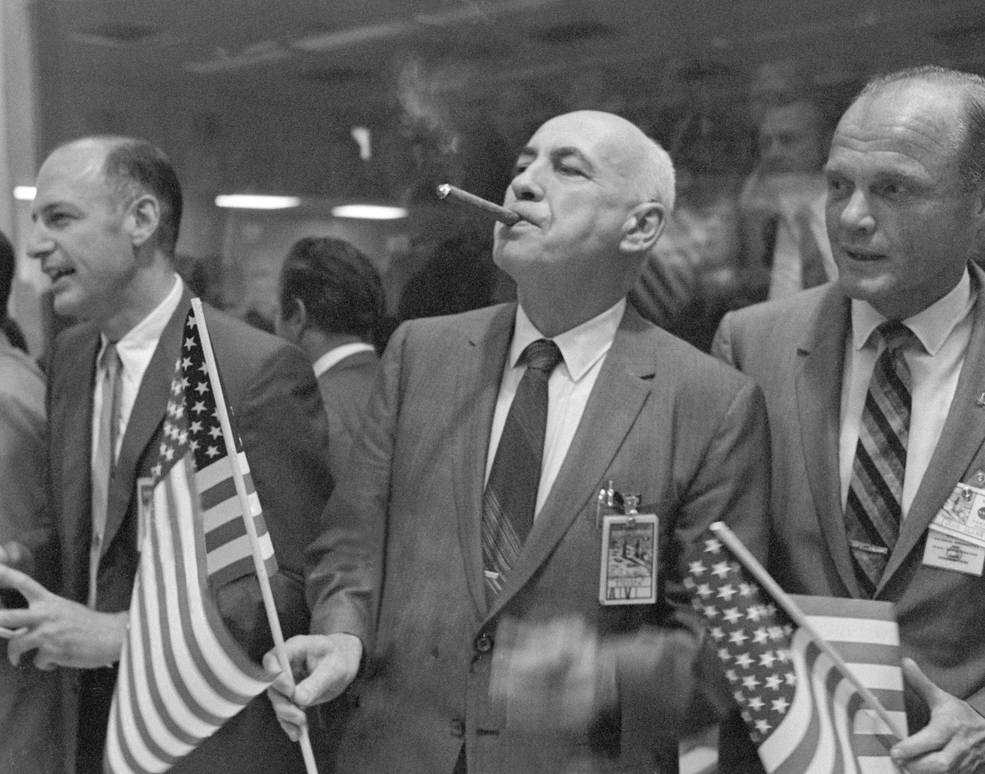
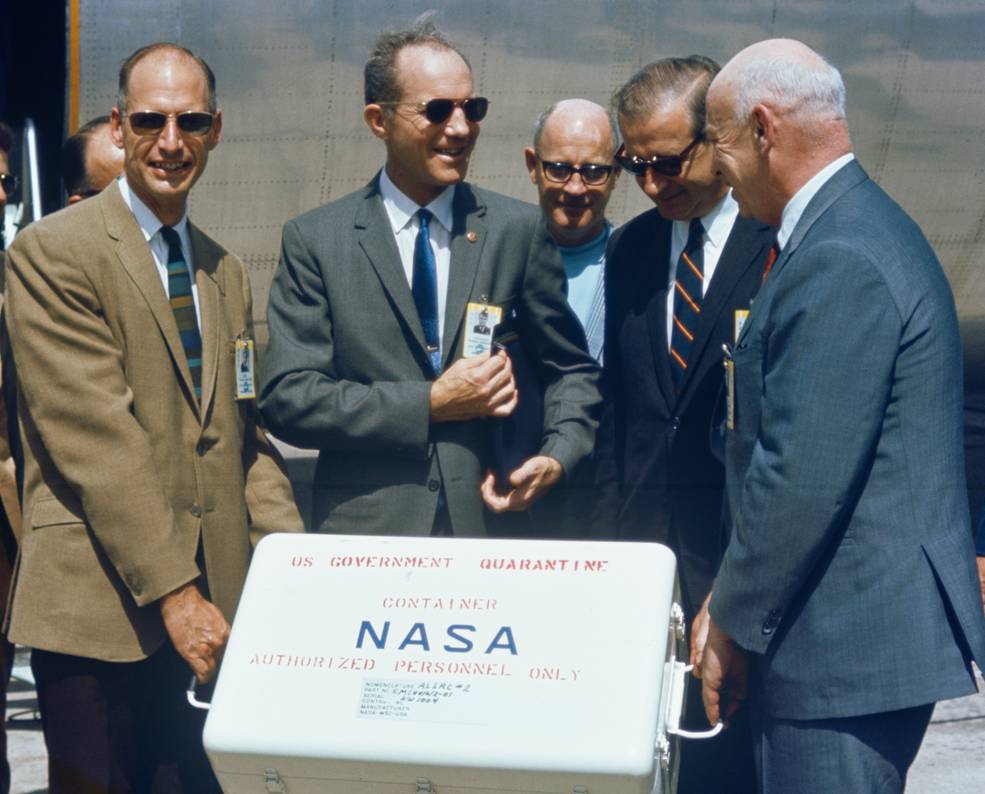
Left: Gilruth during the Apollo 11 Moon landing mission in July 1969. Middle: Gilruth, middle, with
George M. Low, left, and astronaut John Glenn, right, in Mission Control celebrating the successful
splashdown of Apollo 11. Right: Gilruth, right, and Low carrying the first box of Moon rocks after
its arrival in Houston.
On July 20, 1969, Apollo 11 landed on the Moon, and at least the first part of President Kennedy’s goal was met. Gilruth, surrounded by the team that he helped build over the years, all watched from Mission Control as Neil A. Armstrong took that first step on the lunar surface. They all cheered four days later as they watched Apollo 11 splashdown in the Pacific Ocean, meeting the rest of President Kennedy’s goal with the three astronauts safely back on Earth. Two days later, Gilruth and other top NASA managers stood on the tarmac at Ellington Air Force Base near MSC as the first Moon rocks arrived in Houston, beaming with pride and satisfaction as he helped to carry the first box of extraterrestrial material.
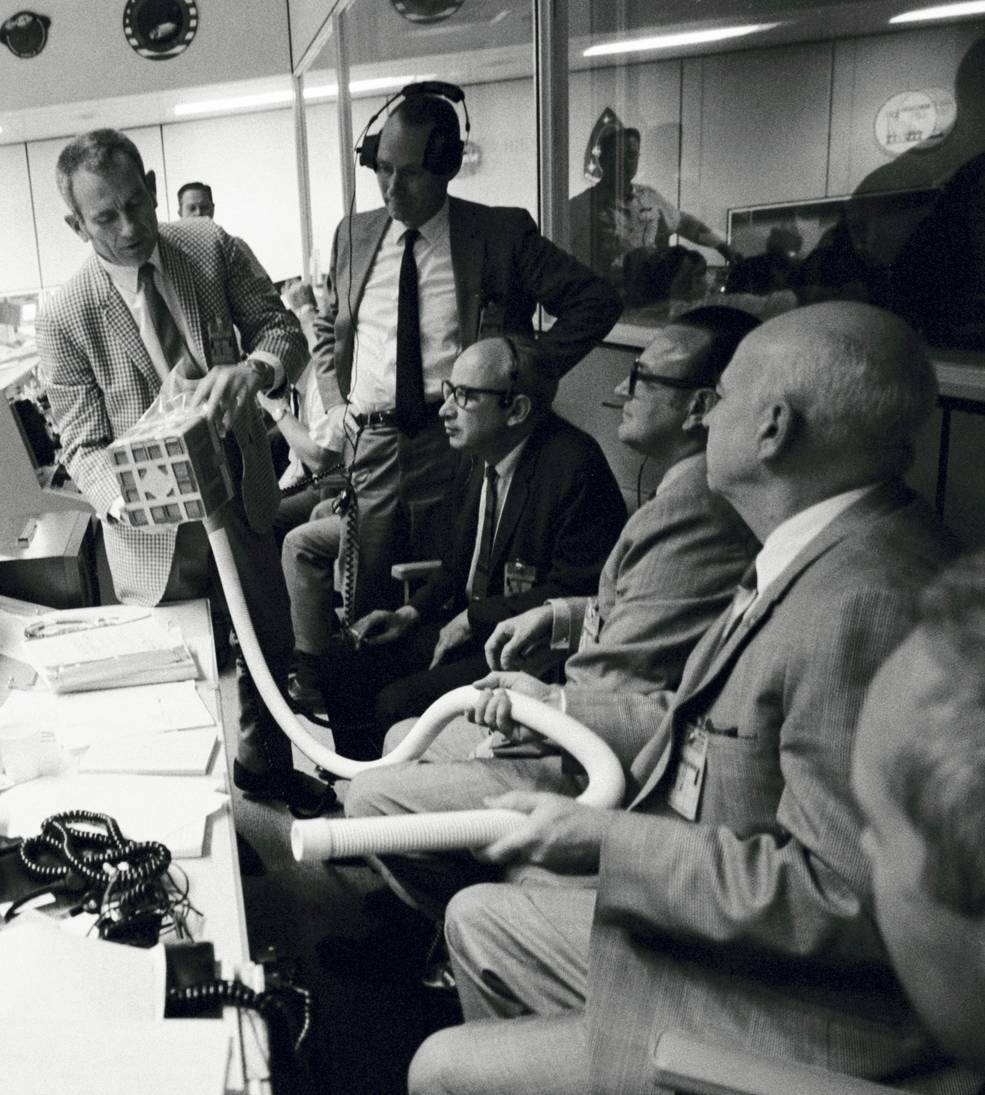
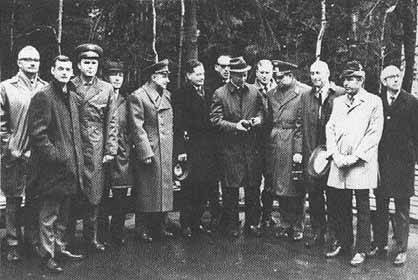
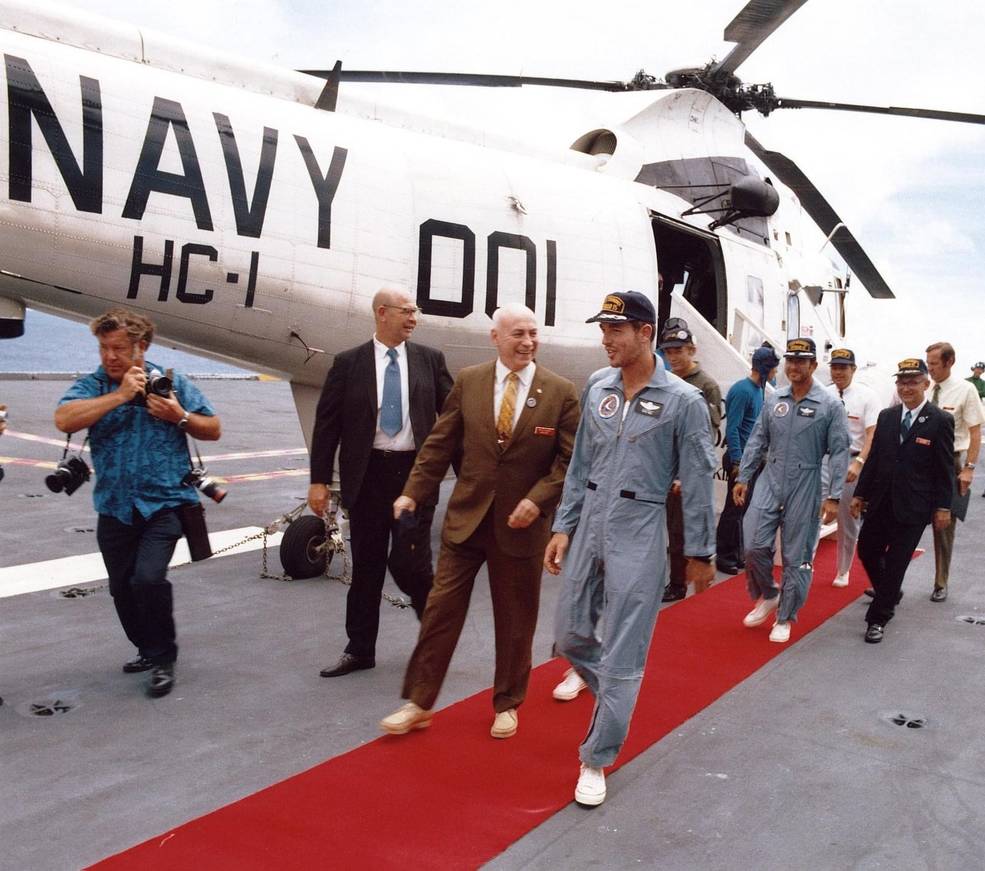
Left: Gilruth, right, in Mission Control in April 1970 being briefed on the makeshift carbon dioxide removal system following the accident aboard Apollo 13. Middle: Gilruth, third from right, with Soviet and American delegates during a visit to Star City in October 1970. Right: Gilruth (in brown suit) greeting the Apollo 15 crew aboard the USS Okinawa in August 1971.
Gilruth’s next leadership challenge took place in April 1970, after an explosion crippled the Apollo 13 spacecraft on its way to the Moon and endangering its crew. After several days of outstanding teamwork between Mission Control and the onboard crew, the astronauts splashed down safely in the Pacific Ocean. Looking beyond the Moon landing missions, Gilruth embarked on negotiations with Soviet counterparts that ultimately led to the Apollo-Soyuz Test Project (ASTP), the first docking between American and Soviet spacecraft in 1975. One of the lasting legacies from ASTP is a derivative of the docking system designed for that mission is used aboard the International Space Station. In August 1971, instead of watching the splashdown from Mission Control, Gilruth flew to the USS Okinawa, the prime recovery ship for Apollo 15, to meet the crew returning from the fourth Moon landing.
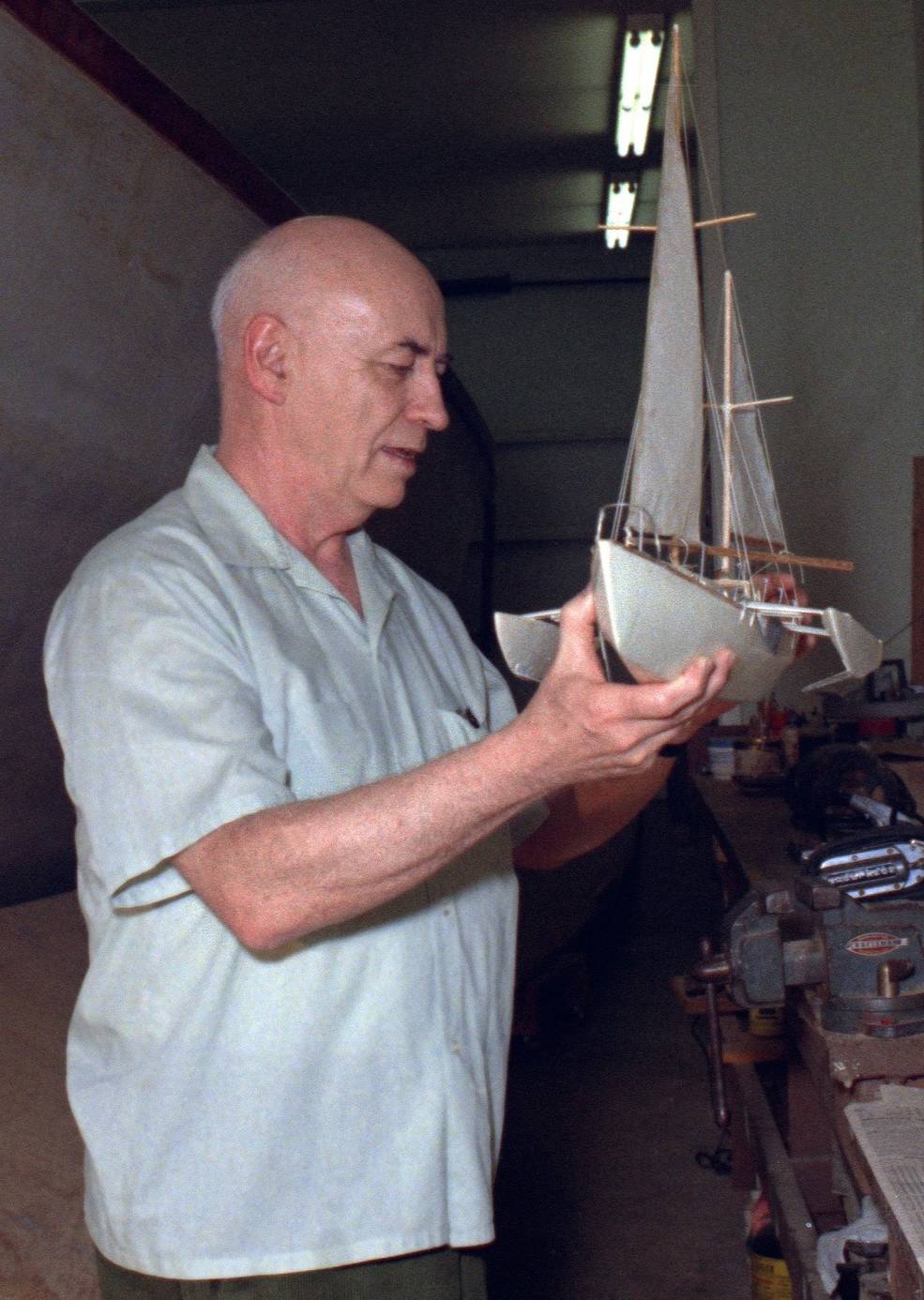
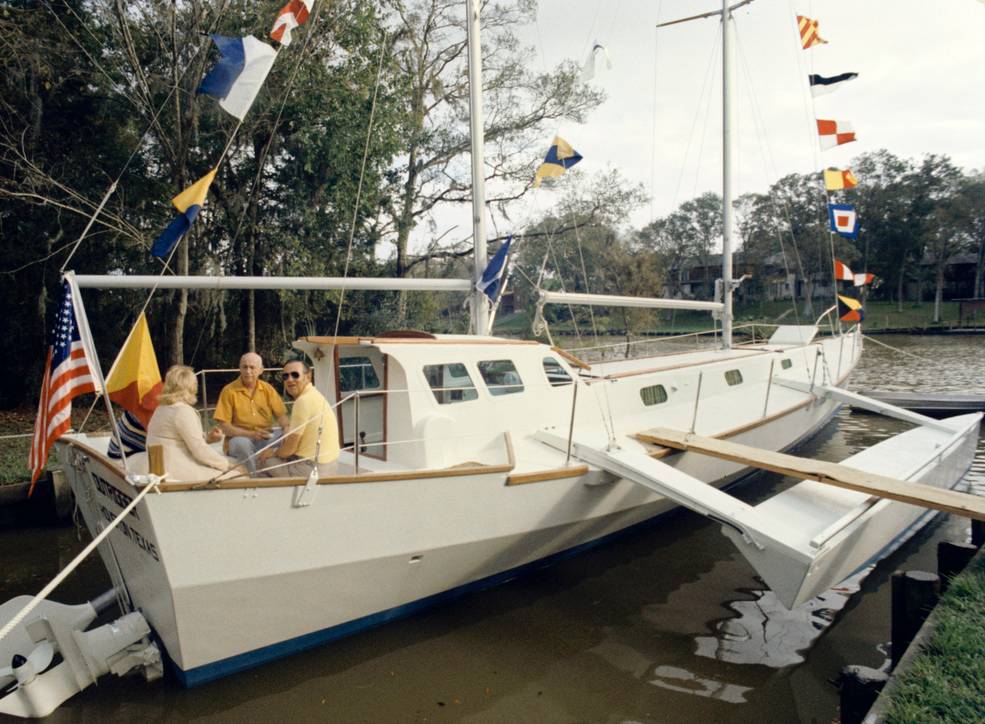
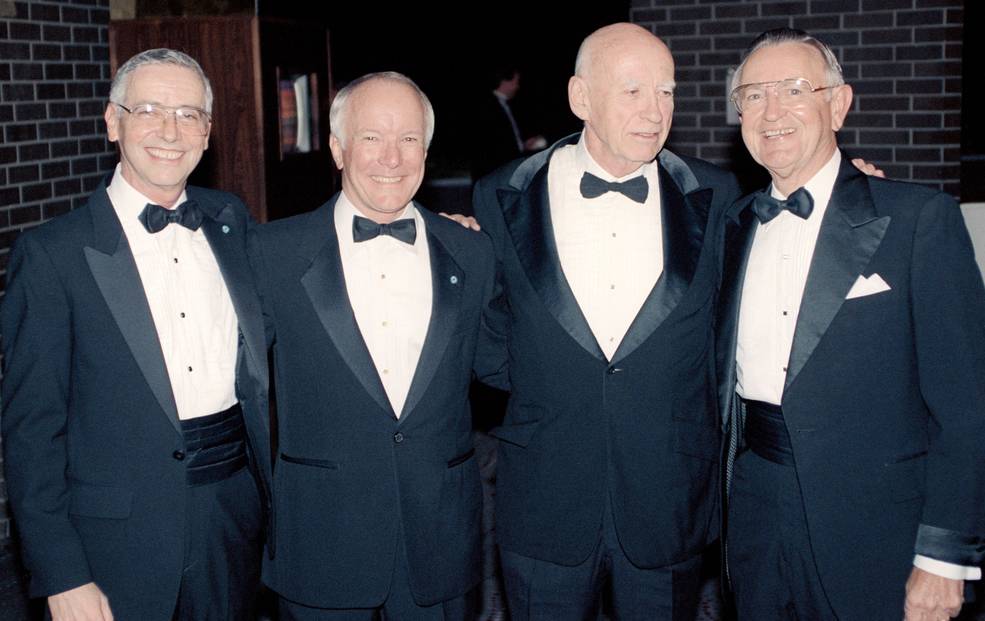
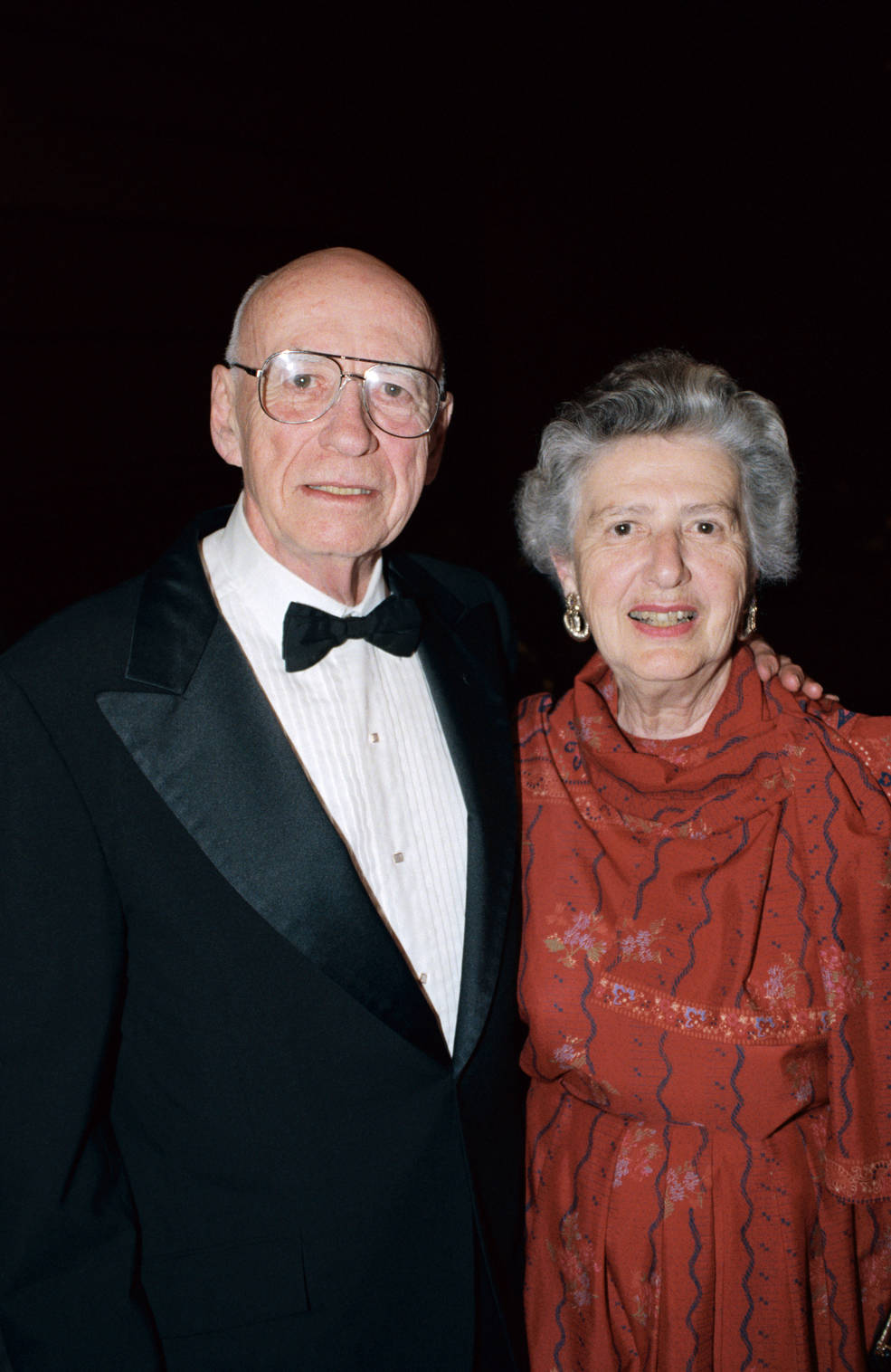
Left: Gilruth in February 1972 with a model of the boat he was building. Middle left: Gilruth and guests in December 1973 aboard the boat Outrigger that he built. Middle right: Gilruth, second from right, in 1991 with three of his successors as Johnson Space Center director, left to right, Aaron Cohen (1986-1993), Gerald D. Griffin (1982-1986), and Christopher C. Kraft (1972-1982).
Right: Bob and Jo Gilruth in 1991.
On Jan. 14, 1972, NASA Administrator James C. Fletcher appointed Gilruth to the new position of director of key personnel development, with Kraft, Gilruth’s deputy, succeeding him as the MSC director. Although reporting to NASA Deputy Administrator George M. Low at NASA Headquarters in Washington, DC, Gilruth remained in Houston. In this new capacity, he had the responsibility for identifying near and long range potential candidates for key positions across the agency. He retired from NASA in December 1973, the same month he christened his multihull 52-foot sailboat Outrigger, a craft he designed and built himself. He remained active as a consultant after this retirement and continued to participate in NASA related activities for many years. He was 86 when he died, survived by his wife Jo and daughter Barbara Jean Wyatt.


























